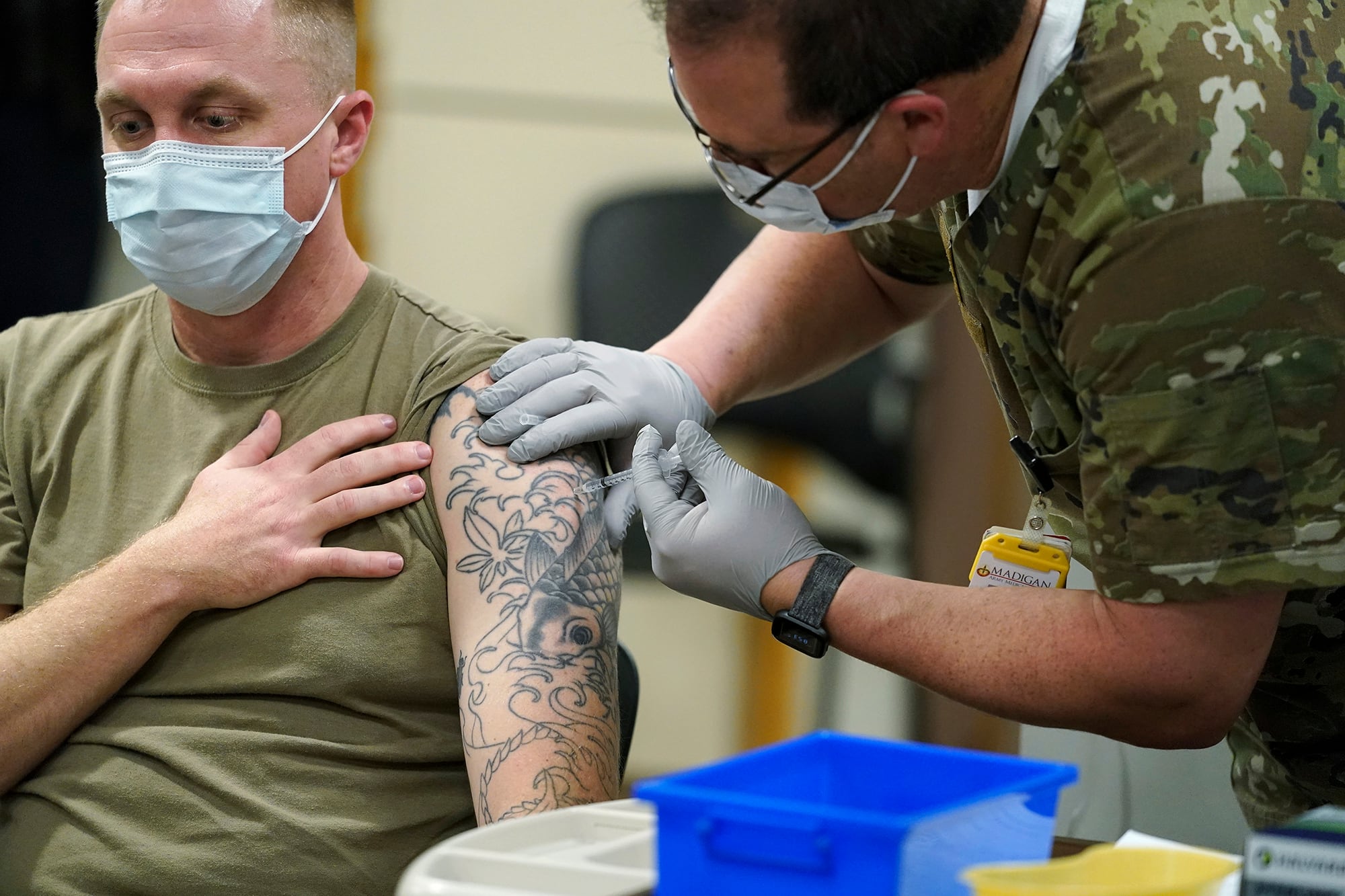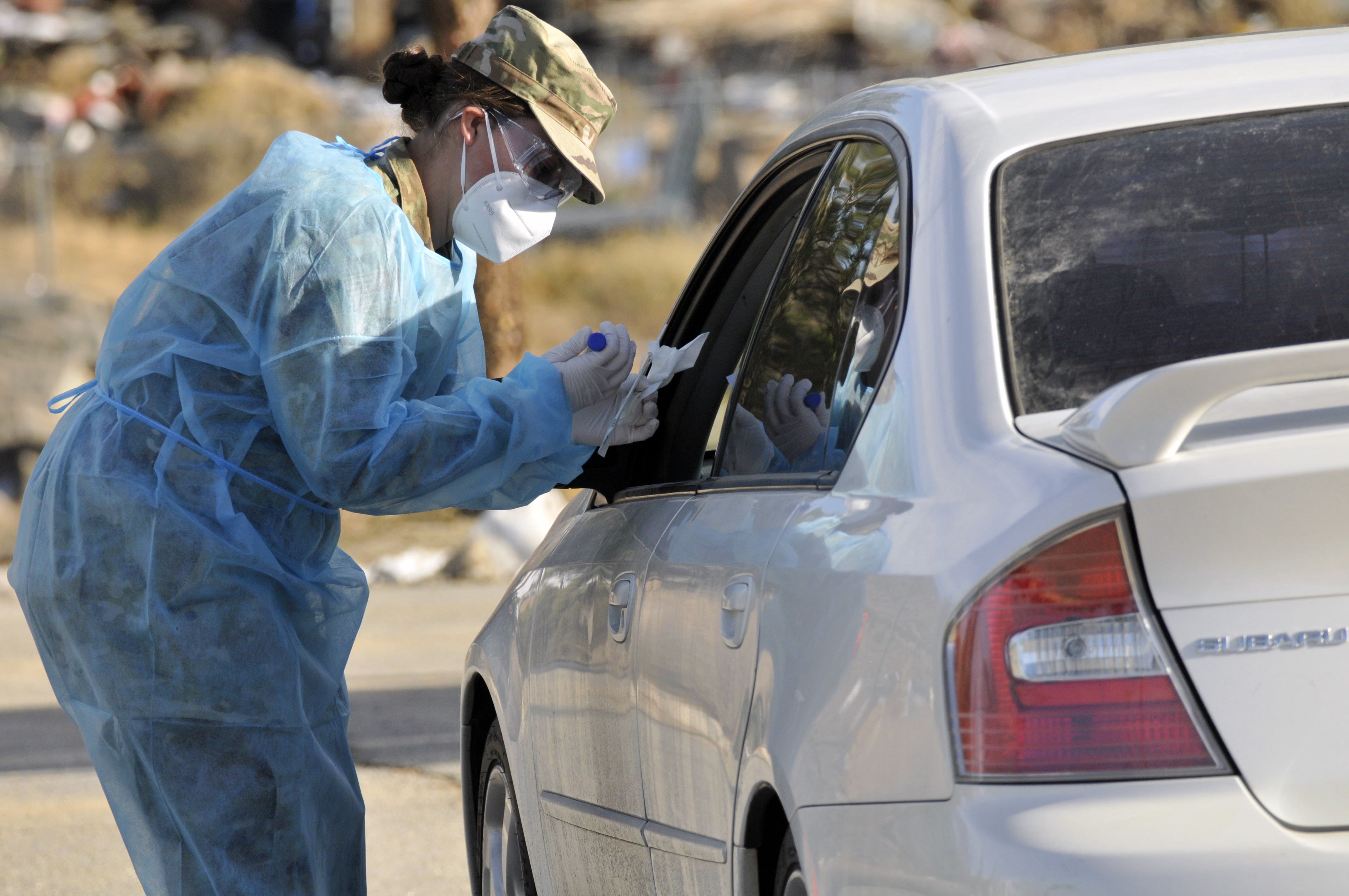For most of the COVID-19 pandemic, the Defense Department has reported one or two service member deaths monthly, with a peak of four in November 2020. That was, until late July, when two sailors died, and were quickly followed by a field-grade Army officer and then five more troops in one week.
Five service member deaths of COVID-19 were reported between Aug. 11 and Aug. 18, according to DoD’s latest numbers, the pandemic’s highest weekly death toll. Eight total deaths in the past three weeks adds up to twice the previous monthly high, after a period that began in May with no deaths at all.
The deaths include:
- Marine Corps Sgt. Edmar Ismael, 27, of 2nd Marine Logistics Group at Camp Lejeune, North Carolina, died Aug. 14.
- Navy Personnel Specialist First Class Debrielle Richardson, 29, of Helicopter Maritime Squadron 60 in Jacksonville, Florida, died Aug. 13.
- Navy Aviation Support Equipment Technician 2nd Class Robert Antonio McMahon, 41, of Naval Air Station Joint Reserve Base New Orleans, died Aug. 14.
- Texas Army National Guardsman Chief Warrant Officer 2 Michael Riddick, 58, of the 36th Combat Aviation Brigade, died Aug. 15.
- Air Force Senior Airman Daniel William Moise, 31, of the 919th Special Operations Wing at Duke Field, Florida, died July 27 (his death was not reported to DoD until after Aug. 11).
Ismael’s death makes him the first Marine to die of complications from COVID-19, as well as the youngest service member to date.
“We are deeply saddened by the tragic loss of Sgt. Ismael. He was a fighter, and his resolve battling this illness was tremendous,” said Lt. Col. Brandon E. Cooley, commanding officer of 8th Engineer Support Battalion, in a release. “We will continue to offer support to his family, friends, and colleagues during this difficult time.”
So far, the military has reported 34 deaths from COVID-19, for a 0.01 percent death rate. While it’s still far lower than the overall U.S. rate of 1.7 percent, that rate is 25 times higher than it was last year.
By contrast, for much of 2020, the general rate stayed around 3 percent, while in the military, it was 0.0004 percent. So while the mortality rate has dropped for the average U.S. resident, it has grown precipitously for service members.
So, too, has the infection rate. Though COVID-19 spread through the military more slowly in the first half of 2020, the current infection rate is 10 percent, where the rate stands at 11 percent for the general population.
The spike in deaths comes as Defense Secretary Lloyd Austin prepares to ask President Joe Biden for a waiver that would allow DoD to mandate COVID-19 vaccines, as yet still under emergency use authorization from the Food and Drug Administration.
RELATED

“I strongly support Secretary Austin’s message to the Force today on the Department of Defense’s plan to add the COVID-19 vaccine to the list of required vaccinations for our service members not later than mid-September,” Biden said Aug. 9.
Austin’s plan would be to make that ask in mid-September, possibly after the Pfizer vaccine is already fully FDA approved. In that case, Pfizer could become mandatory right away, and Austin would only need waivers for Moderna and Johnson & Johnson.
As of Wednesday, 58 percent of the active-duty and reserve components had gotten as least one vaccine dose, with 47 percent fully vaccinated.
That represents a small jump, about 2 percent, in vaccination rates since Austin’s announcement that they would soon become mandatory. The boost isn’t necessarily attributable to the announcement, however, as vaccination rates have consistently climbed 1 to 2 percent in recent weeks.
More than 222,000 troops have contracted COVID-10, according to the latest numbers, just under 2,000 of whom have been hospitalized. That represents 5,000 new cases since Aug. 11.
The previous week saw 4,000 new cases, as infections across the country have continued to soar, with just over 50 percent of Americans vaccinated.
By contrast, more than 99 percent of current hospitalizations are among the unvaccinated, with no deaths or one or two deaths only, varying by state, among vaccinated individuals.
Though breakthrough cases continue to be rare, the Centers for Disease Control and Prevention on Aug. 18 recommended a booster shot to increase immunity against the delta variant, in light of new data showing decreased effectiveness as the latest strain of the novel coronavirus continues to gain momentum.
So far, Austin isn’t making moves to request vaccine waivers sooner, Pentagon spokesman John Kirby told Military Times on Thursday.
“Obviously, we’re deeply concerned by the trends and the numbers,” Kirby said. “And our thoughts and prayers go out to the loved ones and family members of those who have lost their lives to this pandemic, not just here in the department, but across the country as the delta surge continues to claim more victims.”
Meghann Myers is the Pentagon bureau chief at Military Times. She covers operations, policy, personnel, leadership and other issues affecting service members.




